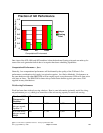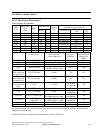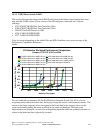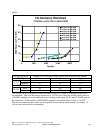
typically recommended because it allows the Linux partitions to leverage the storage subsystem the
customer has in the OS/400 hosting partition.
2. As the application gains in complexity, it is probably less likely that the application should switch
from one product to the other. Such applications tend to implicitly play to particular design choices of
their current product and there is probably not much to gain from moving them between products.
3. As scalability requirements grow beyond a 4-way, the DB2 on OS/400 product provides proven
scalability that Linux may not match at this time. If functional requirements of the application require
DB2 UDB on Linux and scaling beyond 4 processors, then a partitioned data base and multiple LPARs
should be explored.
See also the IBM eServer Workload Estimator for sizing information and further considerations when
adding the DB2 UDB for Linux on iSeries workload to your environment.
13.8 Linux on iSeries and IBM eServer Workload Estimator
At this writing, the Workload Estimator contains the following workloads for Linux on iSeries:
y File Serving
y Web Serving
y Network Infrastructure (Firewall, DNS/DHCP)
y Linux DB2 UDB
These contain estimators for the above popular applications, helpful for estimating system requirements.
Consult the latest version of Workload Estimator, including its on-line help text, when specifying a
system containing relevant Linux partitions. The workload estimator can be accessed from a web browser
at http://www-912.ibm.com/wle/EstimatorServlet.
13.9 Top Tips for Linux on iSeries Performance
Here's a summary of top tips for improving your Linux on iSeries LPAR performance:
y Keep up to date on OS/400 PTFs for your hosting partition. This is a traditional, but still useful
recommendation. So far, some substantial performance improvements have been delivered in fixes
for Virtual LAN and Virtual Disk in particular.
y Investigate keeping up to date with your distribution's kernel. Since these are not offered by
IBM, this document cannot make any claims whatever about the value of upgrading the kernel
provided by your Linux distributor. That said, it may be worth your while to investigate and see if
any kernel updates are provided and whether you, yourself can determine if they aid your
performance.
y If possible, compare your Distribution's versions. This is a topic well beyond this paper in any
detail, but in practice fairly simple. A Linux distributor might offer several versions of Linux at any
given moment. Usually, you will wish the latest version, as it should be the fastest. But, if you can
IBM i 6.1 Performance Capabilities Reference - January/April/October 2008
© Copyright IBM Corp. 2008 Chapter 13 - Linux 186


















